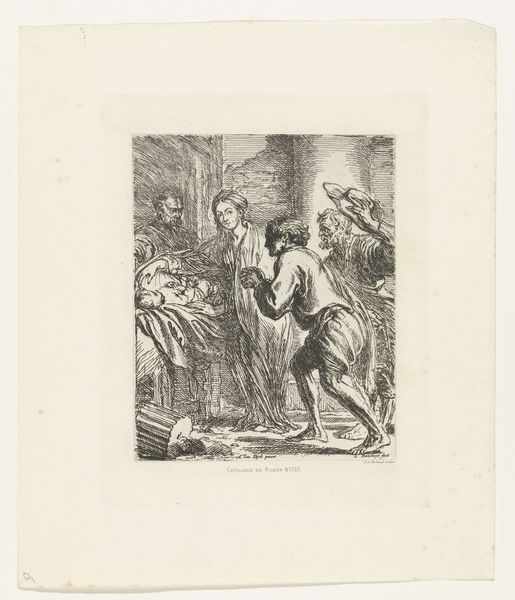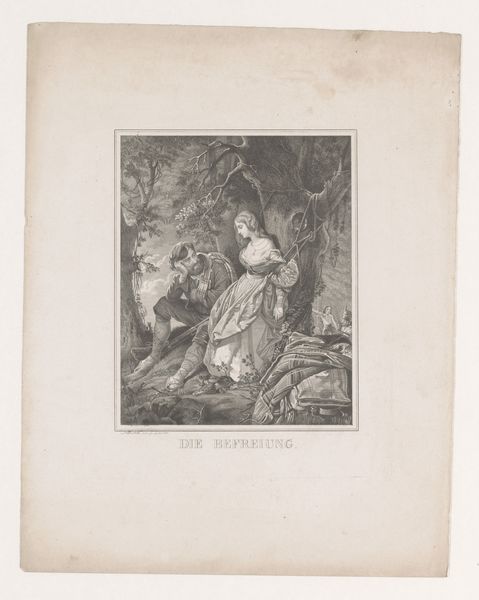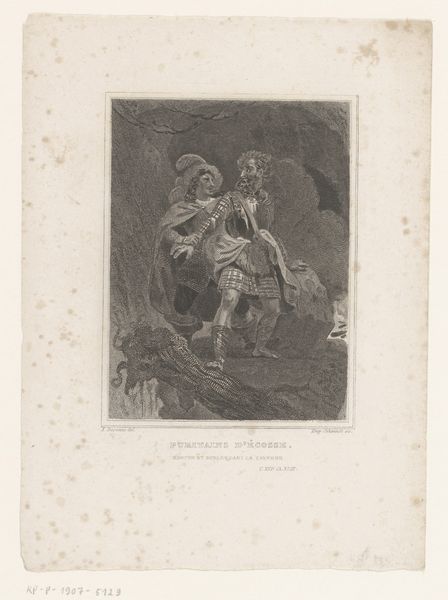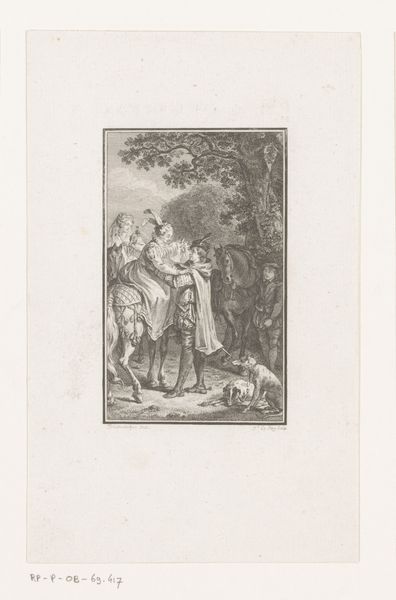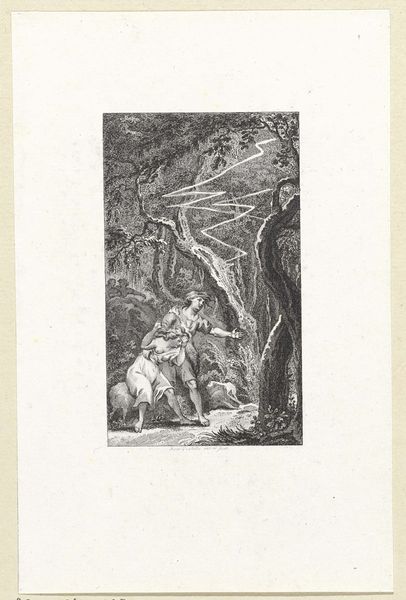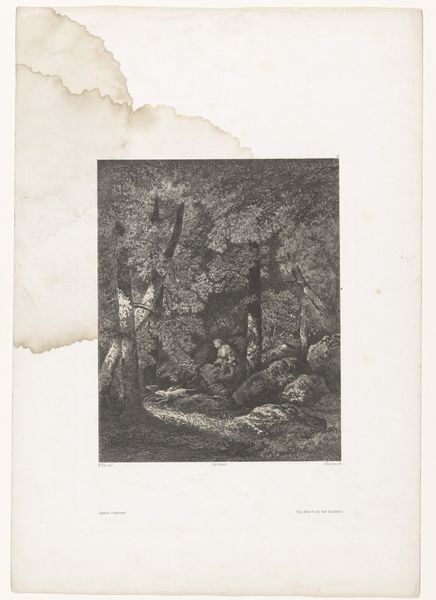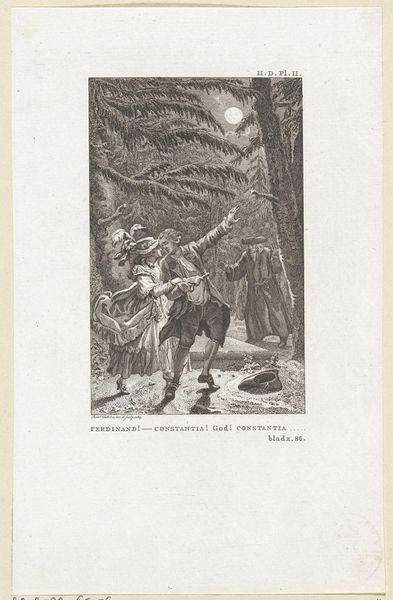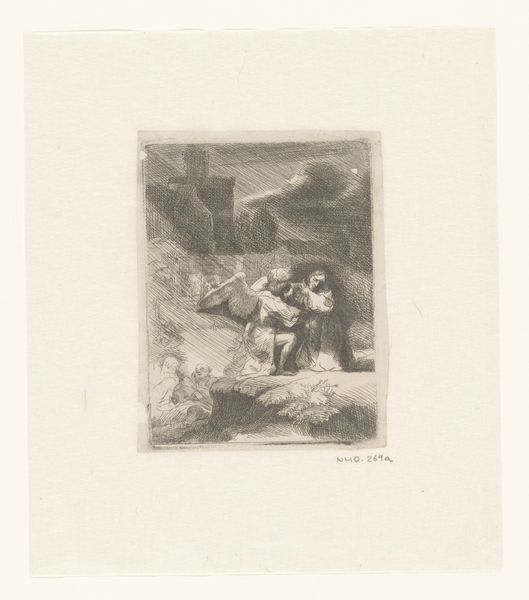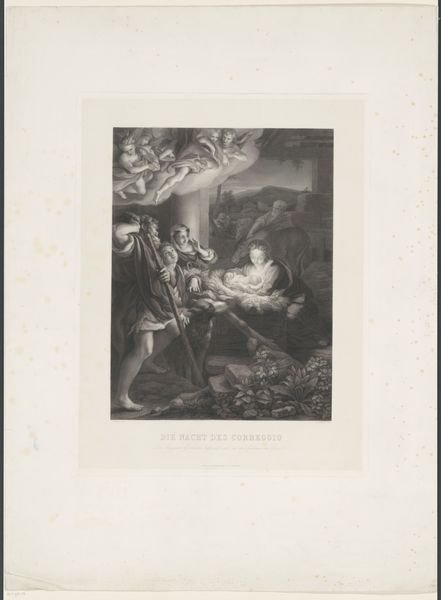
drawing, print, engraving
#
drawing
# print
#
landscape
#
figuration
#
romanticism
#
genre-painting
#
history-painting
#
engraving
Dimensions: height 144 mm, width 117 mm
Copyright: Rijks Museum: Open Domain
Curator: Here we have “Two Men Fleeing in a Forest,” a print, or rather an engraving, by Johannes Christiaan Bendorp, created sometime between 1776 and 1847. The Rijksmuseum houses this particular impression. What strikes you about it initially? Editor: Well, the urgency is palpable. There's a sense of flight, of being pursued, that feels quite unsettling given the rather idyllic Romantic landscape surrounding them. It makes me wonder about the nature of their flight. Curator: It’s fascinating to consider the conditions of artistic production here. Bendorp, an engraver, a maker of multiples. We see not just the artist's hand, but also the societal and economic structures that allow this image to circulate and reach a broader audience. The lines are intricate, detailed. Note the different values and shading techniques. The medium itself contributes to the mood, creating a somber feel. Editor: Absolutely. And considering the era, the history and genre painting aspects evoke questions of power, persecution, and perhaps social justice, or lack thereof. Who are these men? Are they escaping political upheaval, or something else? The lack of clear identifiers encourages speculation, a common feature in Romanticism, speaking to themes of freedom and self-determination. The setting reinforces that as well—nature providing an avenue for escape, a hiding place. Curator: That contrast is important, I think. These are not idealized figures from high society but ordinary men embroiled in something. And while landscape paintings had established conventions, this print seems to deliberately weave human activity, often genre scenes, within that landscape. Was he subverting the traditions? It could be that the printing process itself—the making and distribution of this particular medium—gave more autonomy, a democratization of imagery and storytelling in general. Editor: Definitely a break away from courtly portraiture! I am curious as to what other symbols might reveal in that composition too. What are the narratives from the era in Dutch culture that explain the dynamics that are unfolding? How were race, gender, and class at play? Curator: These are key questions to delve deeper. His meticulous technique suggests he wanted this print to withstand the test of time. It acts as an historical artifact, capturing a fleeting moment but through the repeatable process of a print, turning it into something enduring. Editor: A lasting record of precarity and resilience, and yet another avenue into which Romantic art might lend itself to radical ideas that reshape societal consciousness.
Comments
No comments
Be the first to comment and join the conversation on the ultimate creative platform.
